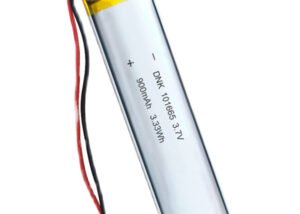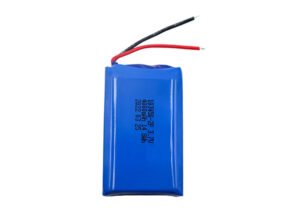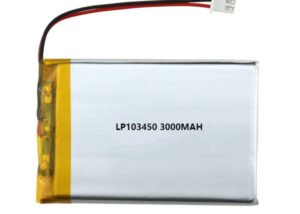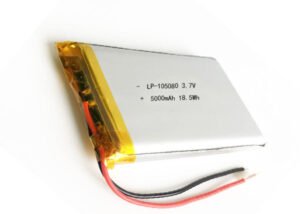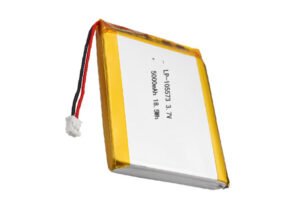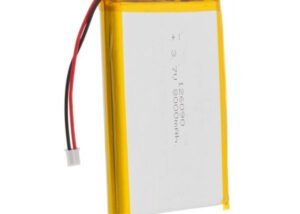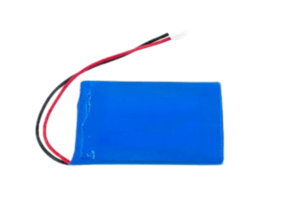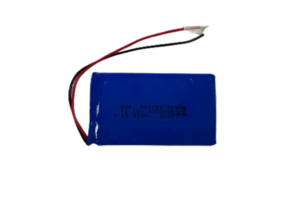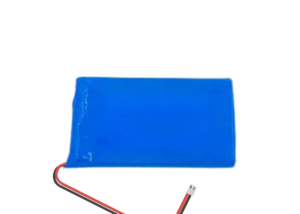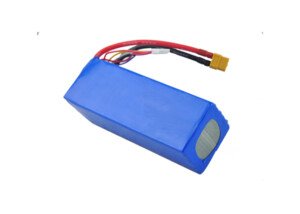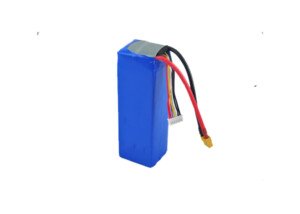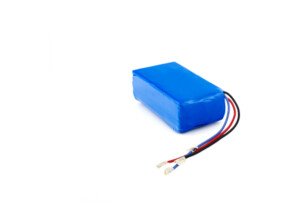Lithium Polymer Battery in Blood Sugar Indicator
In recent years, there has been a significant increase in the use of medical devices for monitoring and managing chronic conditions such as diabetes. One such medical device is the blood sugar indicator, which measures the glucose levels in a person’s blood. These devices are essential for people with diabetes as they allow them to monitor their blood sugar levels and adjust their insulin dosage accordingly. However, these devices require a reliable and long-lasting power source, which is where LiPO batteries come in.
These devices are essential for people with diabetes as they allow them to monitor their blood sugar levels and adjust their insulin dosage accordingly. However, these devices require a reliable and long-lasting power source, which is where LiPO batteries come in.
A lithium-ion polymer (LiPO) battery is a rechargeable battery that uses lithium-ion technology. Unlike traditional lithium-ion batteries, LiPO batteries use a polymer electrolyte instead of a liquid electrolyte. This makes them lighter, thinner, and more flexible than traditional lithium-ion batteries. Additionally, LiPO batteries have a higher energy density than other rechargeable batteries, which means they can store more energy in a smaller space.
A blood sugar indicator, also known as a glucometer, is a medical device used to measure the glucose levels in a person’s blood. It works by pricking the skin with a small needle and collecting a drop of blood. The blood is then placed on a test strip, which is inserted into the device. The device then measures the glucose levels in the blood and displays the results on a screen.
Importance of LiPO Battery in Blood Sugar Indicator
The accuracy and reliability of a blood sugar indicator are crucial for people with diabetes. These devices need to be powered by a reliable and long-lasting battery to ensure that they are always available when needed. LiPO batteries provide the necessary power for blood sugar indicators while being lightweight and flexible, making them an ideal choice for medical devices.
Advantages of LiPO Battery in Blood Sugar Indicator
LiPO batteries offer several advantages over traditional batteries for use in blood sugar indicators.

Firstly, they have a higher energy density, which means they can store more energy in a smaller space. This is important for medical devices that need to be small and portable. Secondly, LiPO batteries have a longer lifespan than other rechargeable batteries. This means that they can be recharged more times before needing to be replaced, reducing the cost of ownership. Finally, LiPO batteries are lightweight and flexible, making them ideal for use in medical devices that need to be portable and easy to carry around.
LiPO Battery Specifications
LiPO batteries come in various sizes and capacities, making them suitable for a range of medical devices. The capacity of a battery is measured in milliampere-hours (mAh), which indicates how much energy the battery can store. The voltage of a battery is measured in volts (V), which indicates the amount of electrical potential energy the battery can provide. The size of a battery is measured in millimeters (mm), which indicates the length, width, and thickness of the battery.
LiPO Battery Charging Process
LiPO batteries can be charged using a standard USB cable. The charging time depends on the capacity of the battery and the charging current. Typically, LiPO batteries take between 1-2 hours to charge fully. It is important to use a charger that is specifically designed for LiPO batteries to avoid overcharging, which can damage the battery. DNK Power is a custom Rechargeable lipolymer battery manufacturer based in China,We have In stock small and compact 3.7V lipo battery, capacity from 5mah, 800mah, 1000mah, 15000mah,10000mah and etc. We focus on the best and cheap small design products that are the most cost-effective, environmentally safe and exceed all of their specifications, we will never let you down, you can check more of our certificates including MSDS UN 38.3, IEC, KC, etc.
Benefits of LiPO Battery in Blood Sugar Indicator
Longer Battery Life
One of the most significant benefits of LiPO batteries is their longer lifespan. LiPO batteries can be recharged more times than other rechargeable batteries, making them a cost-effective choice for medical devices such as blood sugar indicators. This means that people with diabetes can rely on their blood sugar indicator to be available when they need it, without having to worry about replacing the battery frequently.
Portability
Another benefit of LiPO batteries is their lightweight and flexible design, making them ideal for use in portable medical devices such as blood sugar indicators. People with diabetes need to carry their blood sugar indicator with them wherever they go, and a lightweight device is much easier to carry around. Additionally, the flexible design of LiPO batteries means that they can be used in medical devices that need to be flexible, such as wearable devices.
Lower Cost
LiPO batteries are more cost-effective than other rechargeable batteries, such as nickel-metal hydride (NiMH) batteries. This is because LiPO batteries have a longer lifespan and can be recharged more times before needing to be replaced. This reduces the cost of ownership and makes LiPO batteries a more affordable choice for medical devices such as blood sugar indicators.
Safety Features
LiPO batteries have several safety features that make them a safe choice for medical devices. Firstly, they have a built-in protection circuit that prevents overcharging and over-discharging, which can damage the battery. Secondly, LiPO batteries are less prone to leakage and explosion than other battery types, making them a safer choice for medical devices that are in close proximity to the body.
In all, LiPO batteries offer several benefits for use in blood sugar indicators, including longer battery life, portability, lower cost, and safety features. These advantages make LiPO batteries an ideal choice for medical devices that need to be reliable, long-lasting, and portable.
The use of LiPO batteries in medical devices is expected to increase in the future as technology advances and the demand for portable medical devices grows. LiPO batteries have the potential to revolutionize the medical device industry by providing a reliable and long-lasting power source for a range of devices.
LiPO batteries offer several advantages over traditional batteries for use in medical devices such as blood sugar indicators. They provide a reliable and long-lasting power source while being lightweight and flexible, making them an ideal choice for portable medical devices. Additionally, LiPO batteries are more cost-effective and have safety features that make them a safe choice for medical devices. The future of LiPO batteries in medical devices is promising, and we can expect to see more innovations in this field in the coming years.
Here belowing are some lithium polymer batteries in DNK POWER, you can click and see their details. Hope they will be useful to you.


